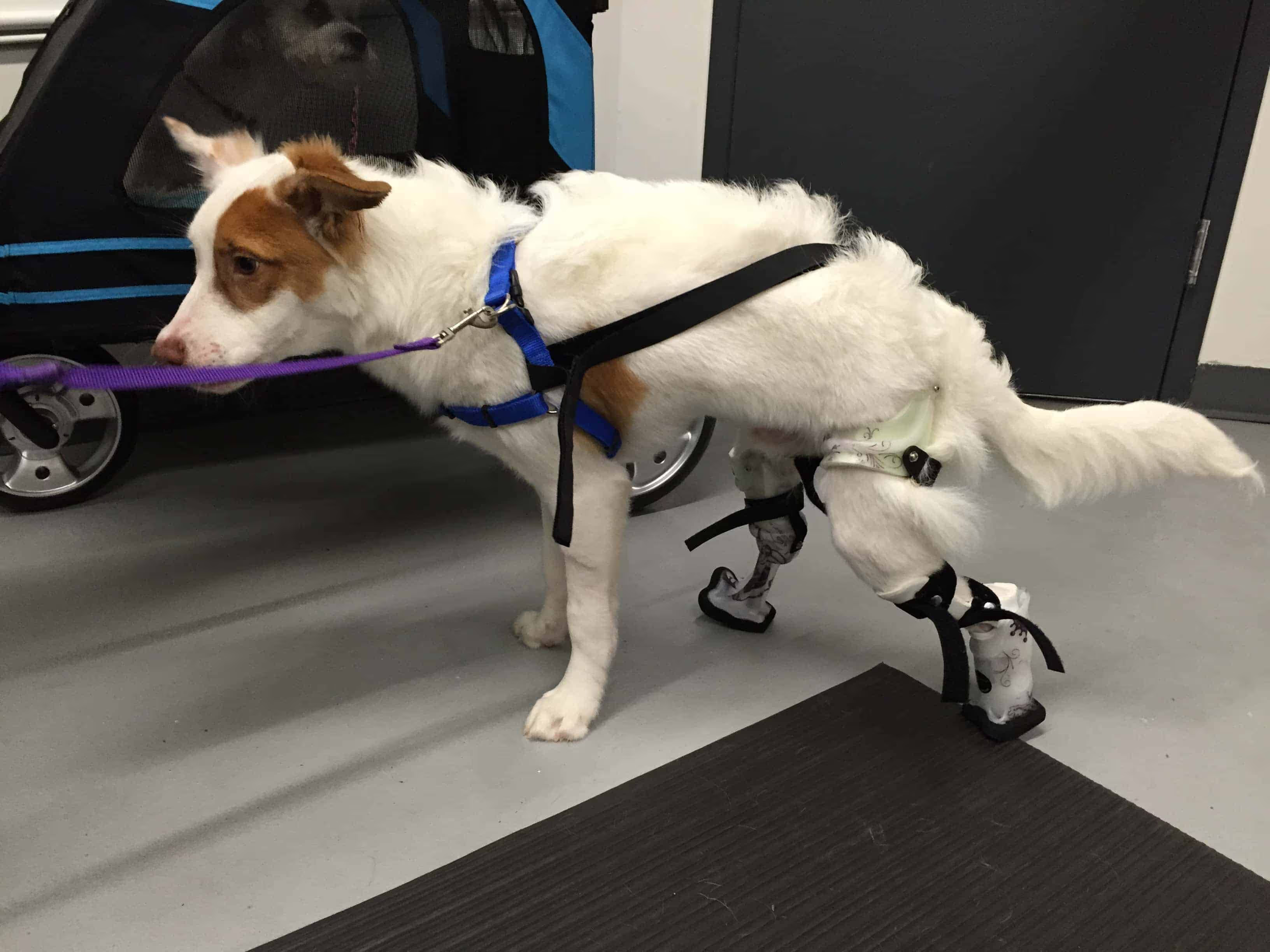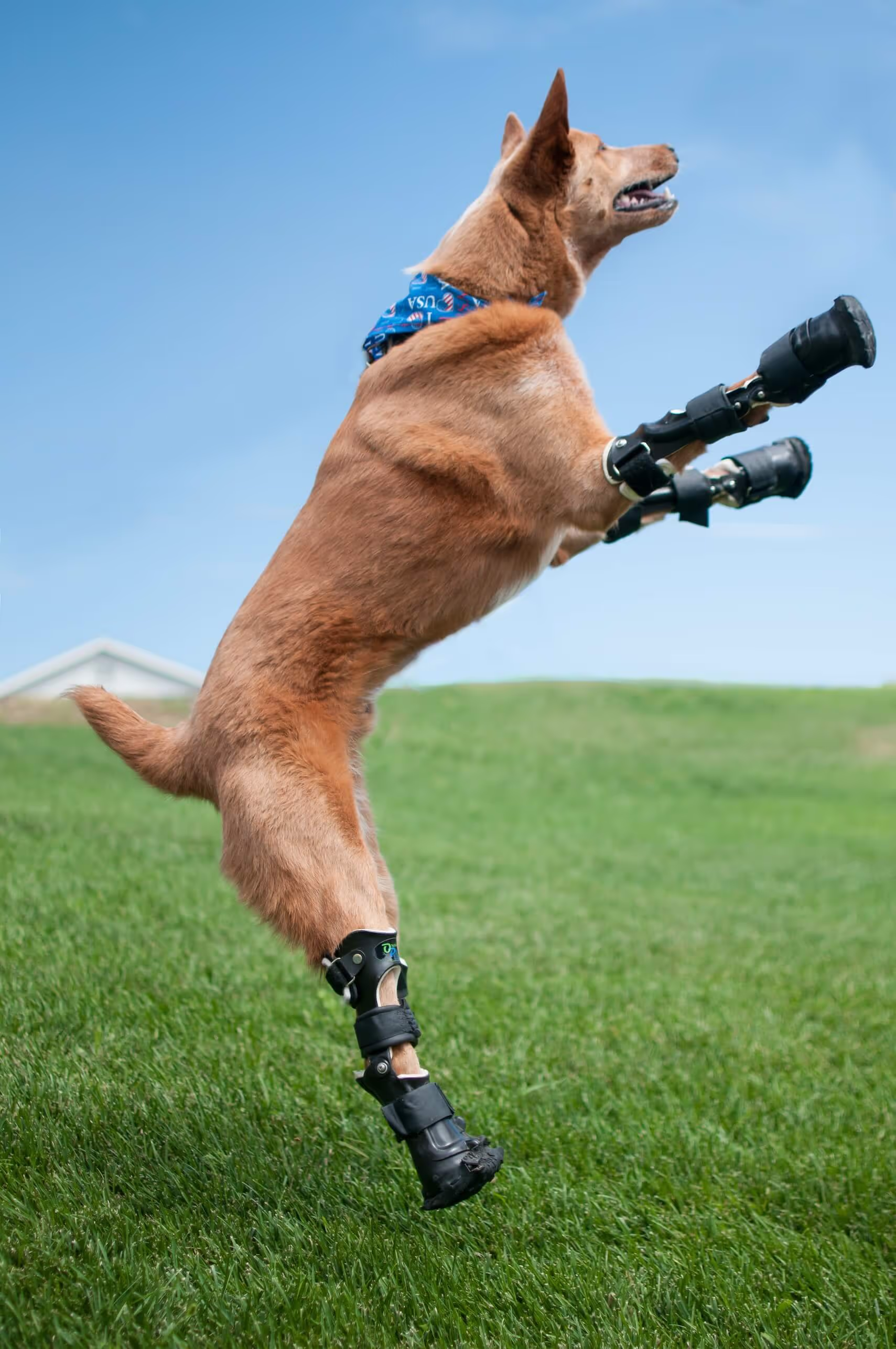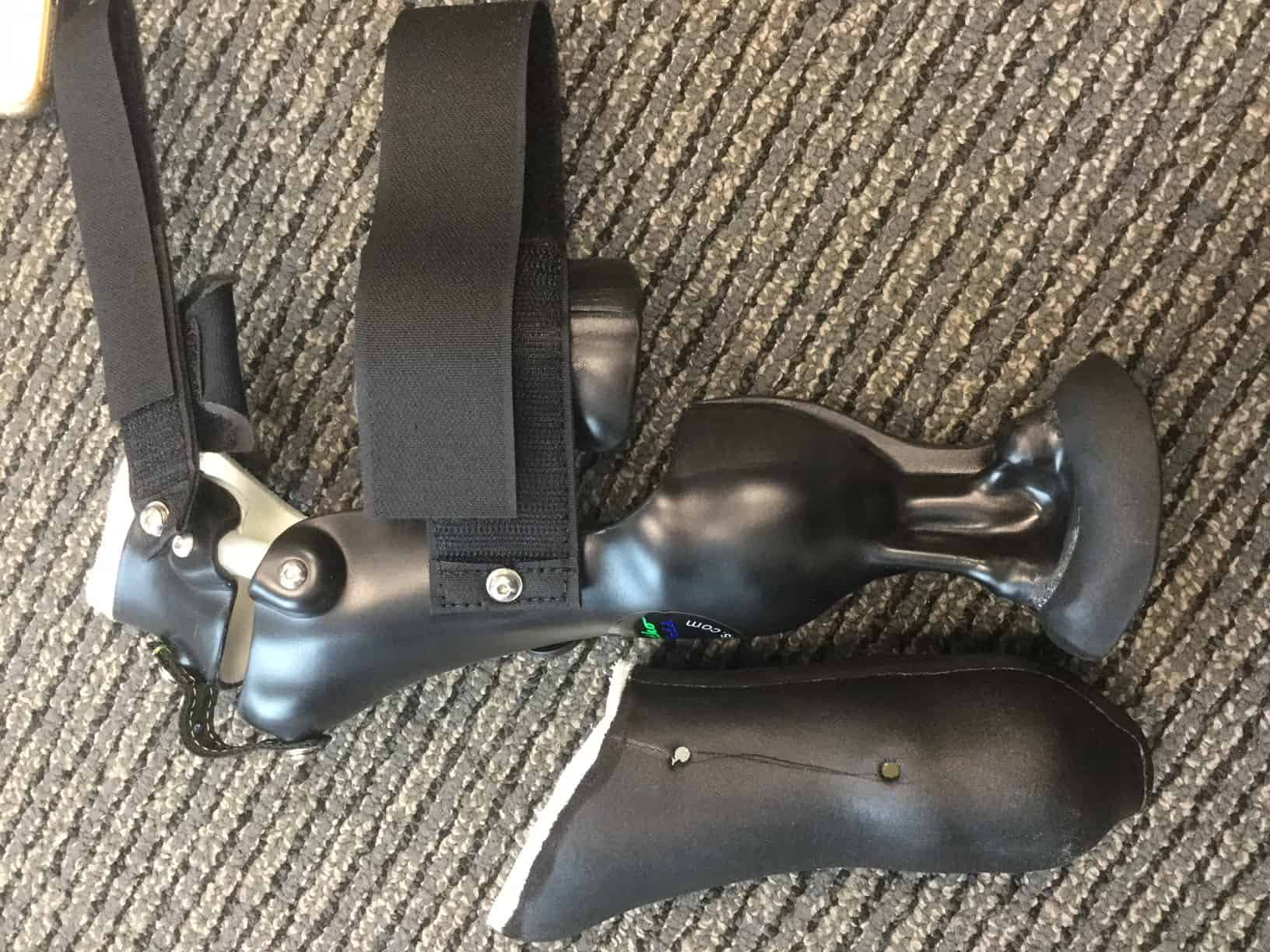Baby Joey and his OrthoPets Prosthetic Devices

OrthoPets Case Study: Baby Joey

OrthoPets was contacted by NYC Second Chance Rescue and Dr. Jonathan Block ofWater4Dogs in New York City to provide prosthetic devices for one of their very special rescue dogs. "Baby Joey" is a terrier mix who had a rough start to his life and was found with portions of both pelvic limbs severed at different locations: the left pelvic limb was missing the distal metatarsals and the right pelvic limb was missing the distal tibia and fibula (see X-rays below).[gallery ids="|" type="rectangular"]
This case was quite challenging as Joey was only 12 weeks old when we were contacted initially. Joey's team was very anxious to get him going in prostheses as he was showing discomfort walking on the ends of the limbs. The decision was made by the rescue and their sponsors to get Joey into prosthetic devices as quickly as possible knowing that due to his young age, he would need multiple devices.OrthoPets receives numerous inquiries regarding the use of prosthetic devices for a number of patients. Most of these cases unfortunately are not candidates due to an insufficient length of residual limb remaining. However, some are perfect candidates for a prosthesis!Each case is carefully evaluated by us which includes a look at the underlying bone structure (radiographs are required), videos of how the patient moves, as well as a review of any other pathology that may affect the patient's ability to use a prosthesis well. For a hind limb prosthesis to be functional, the patient must have 40-50% of the tibia and fibula remaining as well as a functional stifle joint. This allows the patient to control the ground reaction forces within the socket. In general, the more distal limb that is remaining, the higher the success rate with canine prosthetics. If the amputation level is below the malleoli and calcaneus, a traditional style prosthesis (as pictured at right on the left pelvic limb) can be used. When the amputation level is above the tarsus, device suspension becomes more difficult due to the "cone-shaped" residual limb and a lack of bony prominences for suspension. Therefore, prosthesis retention in these cases have to be accomplished with a sophisticated prosthesis design that involves the contralateral femur, lumbosacral spine and a connection to a chest harness, also known as an OrthoPets "Chevy Style Prosthesis" (as pictured below on the right pelvic limb). In addition to minimum limb requirements, patient size, breed and conformation are also an important part of the decision-making on whether a dog is a good candidate or not. For example, if a patient has a low groin and a short femur or humerus, they may not be a candidate.Dr. Block worked with Joey on strengthening his core and stamina to prepare him for the prosthetic devices and designed a rehabilitation plan for after device delivery. Currently, Joey is using a temporary shell design on the left limb until he is full-grown. The purpose of the shell cover is to provide comfort and protection to the inner liner and residual limb, however, the lack of articulation and secure suspension makes this a short-term solution. Once he is full-grown, this will evolve into an articulating tarsus prosthesis. The right pelvic limb did require one of our "Chevy Style" prosthetic devices that includes a socket style prosthesis, a pelvic suspension plate as well as a femoral loop for the left pelvic limb to keep the device positioned and suspended properly.
[gallery ids="|" type="rectangular"]Baby Joey took to the devices fairly well at his initial fitting and by the end of the session was comfortable bearing weight on both devices as well as was able to swing both limbs forward. He has now received his second "Chevy Style" prosthesis for his right limb due to growth. Joey will have a long road learning how to use the devices properly and to learn how to complete normal everyday activities such as going up/down steps and running. The rehabilitation cost and cost for all prosthetic devices is being donated to NYC Second Chance Rescue by the very generous Merrick dog food company.





